Hyacinth is a perennial plant with fragrant and unusually beautiful flowers. Its name is translated from Latin as “rain flower” and this is due to the fact that this species begins to produce buds after the first spring rains. In our climatic zone, it is planted in flower beds and in a pot at home. Hyacinths have an onion that requires planting and care in order to grow and propagate the plant at home.
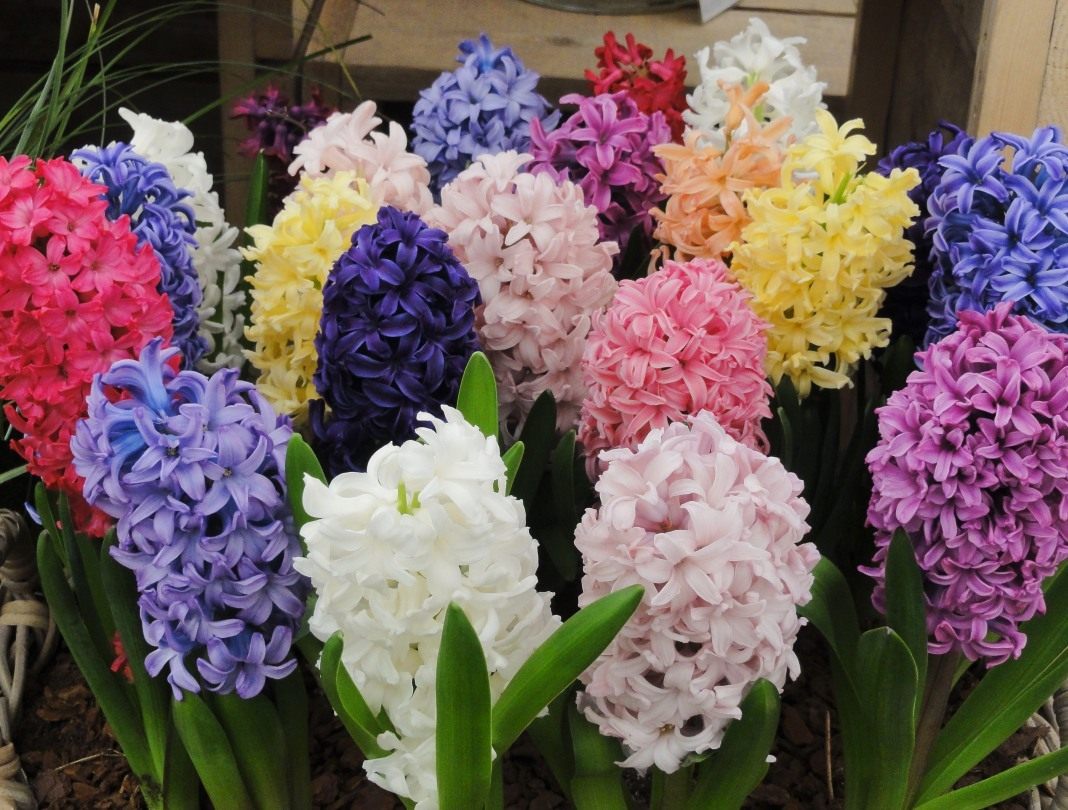
There is no quick way to propagate this plant at home, this requires patience and several years of waiting. In nature, there is a wide variety of this species, which allows plants to decorate the interior of a house, garden or workplace.
Content
Hyacinth characteristics and species diversity
The homeland of this plant is the Mediterranean and Southeast Asia, where it grows in a natural environment and has many species that differ in the shade and texture of the flower. Home hyacinth belongs to the Asparagus family and is a bulbous species.
The characteristic features of this species are as follows:
- plant height is 20-60 cm;
- the presence of a conical bulb, from which children can germinate for reproduction;
- leaves grow slightly higher than the root system and have an elongated, narrowed shape;
- foliage juicy, emerald hue;
- leaf length is 15-20 cm;
- 2 to 8 leaves grow on each hyacinth;
- one dense tubular stem, it is also a peduncle of green shade;
- the presence of a spike-shaped inflorescence;
- the shape of the flowers resembles a small lily, a bell;
- small flowers are collected in a brush;
- single row stamens of flowers;
- fruits in the form of three-nested boxes in which 2 seeds ripen;
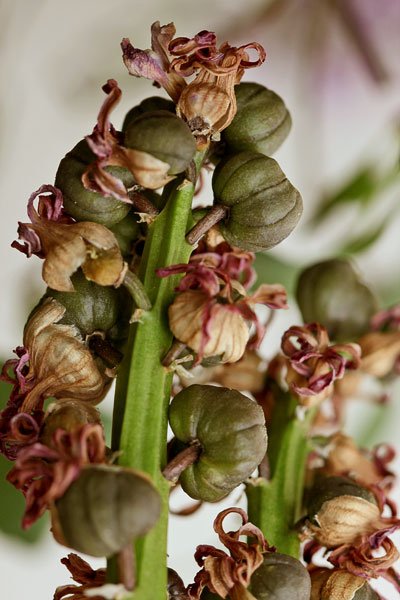
Three-nested boxes - sweet pleasant aroma during flowering;
- various shades of colors: pink, purple, white, blue, and even black.
Previously, experts identified more than 30 types of hyacinth, but today it is customary to distinguish only three species, and the rest of the plant variety is attributed to varieties. The main types:
- Oriental is the most widespread, it is from it that decorative varieties are derived. Characteristic for it is a thin peduncle of 15-23 cm with rarely spaced flowers and a persistent pleasant aroma. The color scheme is the most diverse due to the crossing of varieties. Habitat - Greece and Asia. The flowering period is several weeks.
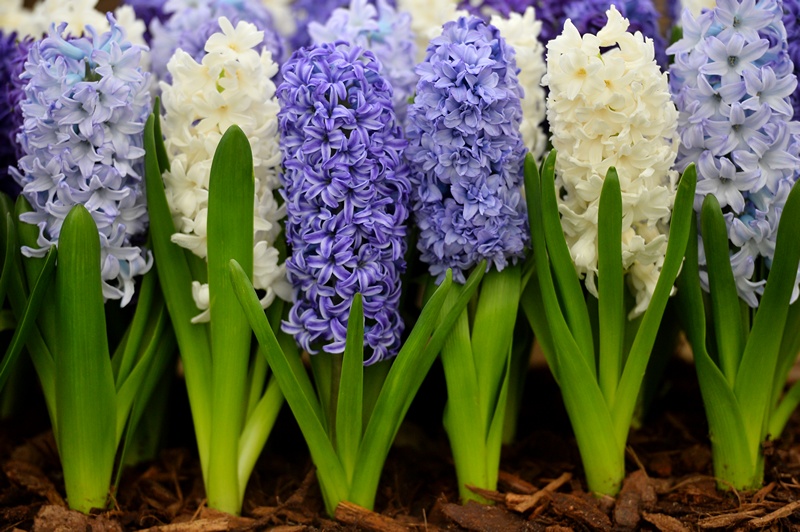
Oriental - Hyacinth Litvinova has a very widespread and rather wide foliage, as well as light blue, violet, pink, sometimes green flowers of a cut form with stamens protruding outward. It reaches a height of 25 cm, but there are also low-growing varieties. Represented in the flora of Iran and Turkmenistan.
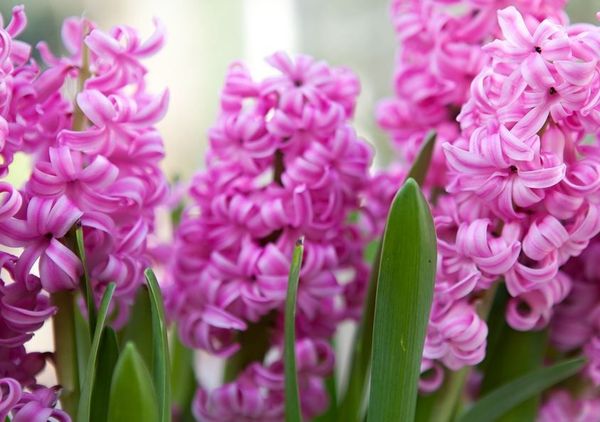
Litvinova - The Trans-Caspian is a mountain representative of its kind, having several stems and flowers of a blue hue. It grows to 20 cm, the leaves are fleshy and of the same thickness along the entire length. In one inflorescence 4-10 bells. You can meet in the natural environment in the mountains of Kopetdag.
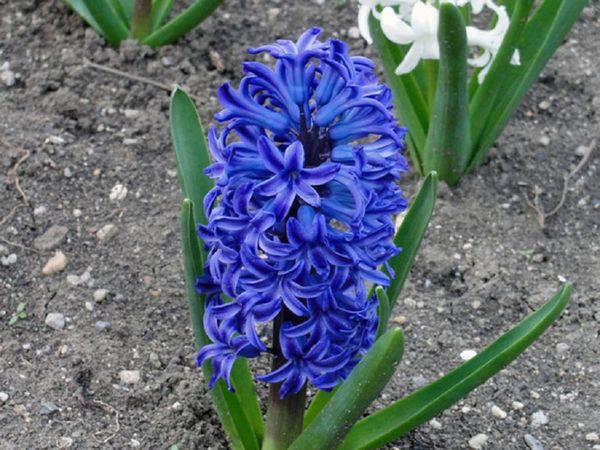
Trans-Caspian
Hyacinths are presented in a large assortment on store shelves, especially during their flowering period, which falls in early spring.The separation of varieties of this species by color is popular, black hyacinth and terry flower varieties are isolated.
A decorative plant can be grown in open ground, on a windowsill in a pot, as well as in greenhouses and greenhouses.
Home Hyacinth Care
Since this flower is still, first of all, a garden species, for growing it in a room, you should look after him carefullyby recreating the natural habitat.
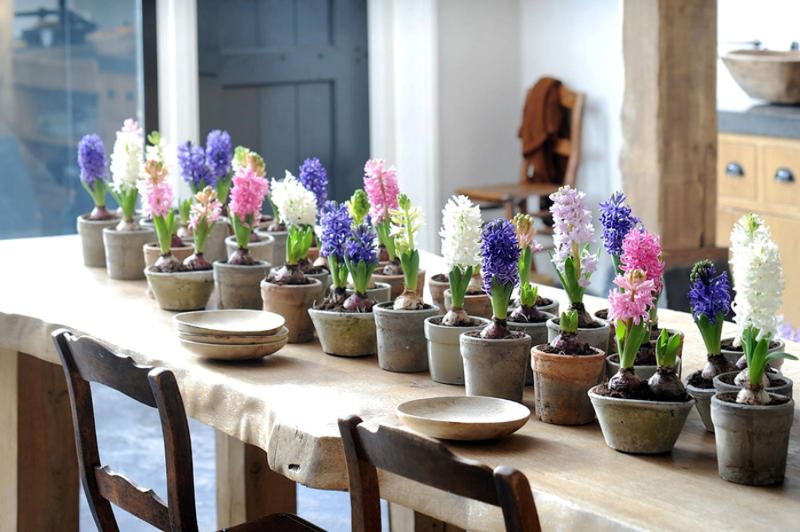
Lighting
Hyacinth loves to bathe in the sun and for successful growth it requires 12-15 hours of light day, it is best to put a flowerpot on a windowsill facing the south side. If this is not the case, then the use of a lamp to increase the amount of light will not be out of place. It is recommended from time to time to turn the container with the flower so that it develops evenly and does not stretch out towards the light.
Temperature and humidity
During the period of active vegetation, an air temperature of 20-22 degrees is suitable. In the summer, it is best to take it to an open terrace or well-ventilated balcony to maximize its growth conditions to natural. The flower does not respond well to temperature changes and drafts, the presence of heating devices next to it is extremely undesirable.
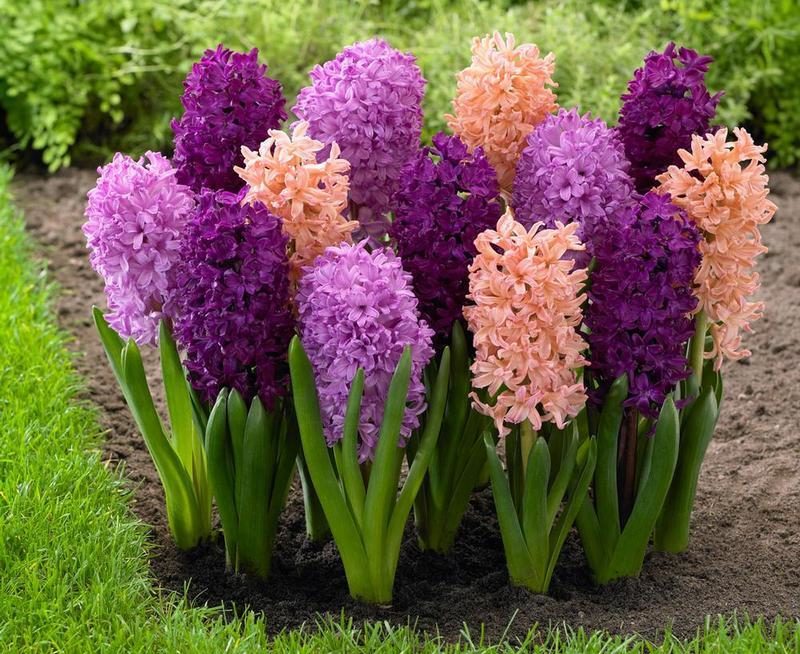
Despite the fact that the name flower of rain is fixed to hyacinth, it does not require additional spraying and humidification of the air. If excess moisture gets on the stem and flowers, they begin to fall off and deteriorate, which can lead to diseases. It is strictly forbidden to spray a houseplant during its flowering period. The maximum that is allowed is rubbing dust from leaflets, in case of emergency.
Watering and feeding
The plant loves moisture and the soil in the flowerpot should be constantly moist, therefore it should be often, but moderately watered hyacinth. Since it is undesirable to get liquid on the ground, it is better to use the method of immersing the pot in water or pour it exclusively on the edge of the container so as not to damage the greens.
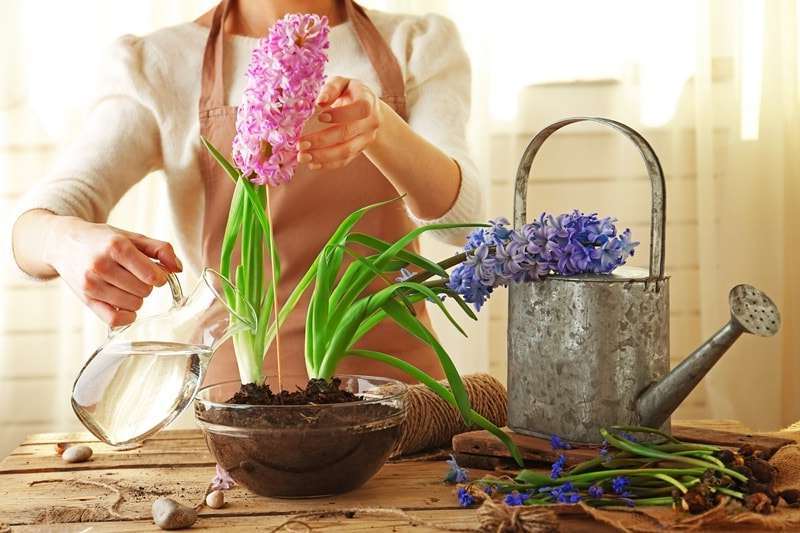
Since the substrate in the pot is rapidly depleted, it is necessary to constantly feed the plant at all periods of its development. During the active vegetation, you need to feed twice a month. The use of various types of fertilizers, mineral and organic, as well as in dry and soluble form is acceptable.
Before applying fertilizing, the soil must be moistened. During dormancy, hyacinth also needs to be fertilized with soil or bulbs if it is resting separately. Bulbs can also be sprayed with special products purchased in flower shops.
Diseases and Pests
A fragrant and beautiful flower can be susceptible to various diseases or pest attacks. You should know their symptoms in order to timely help the home plant:
- yellow bacterial rot is determined by the appearance of gray spots on the foliage;
- symptoms of apical rot are rotting of the roots and the presence of brown furrows on the green;
- mosaics are typically the presence of light green spots of various shapes on foliage;
- gray rot appears on the bulbs in the form of gray spots, which quickly become brown and lead to the death of the plant;
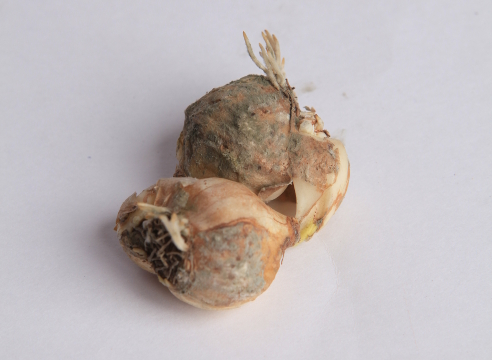
Gray rot - among pests, thrips, aphids, and nematodes can attack hyacinth.
To combat the above diseases and insects, you should use special preparations sold in specialized stores for flower growers. Processing the plant according to the instructions will help save it and continue growing.
Propagation and planting of hyacinths at home
Since hyacinth is a plant that can be grown in a flowerpot as successfully as in a garden, you should be aware how to plant and propagate it at home.
Landing
Pretty simple grow a flower from a bulb. The following algorithm is used:
- Selection of a medium pot in which one or more onions will be planted.
- Buying bulbs in a store on the market.
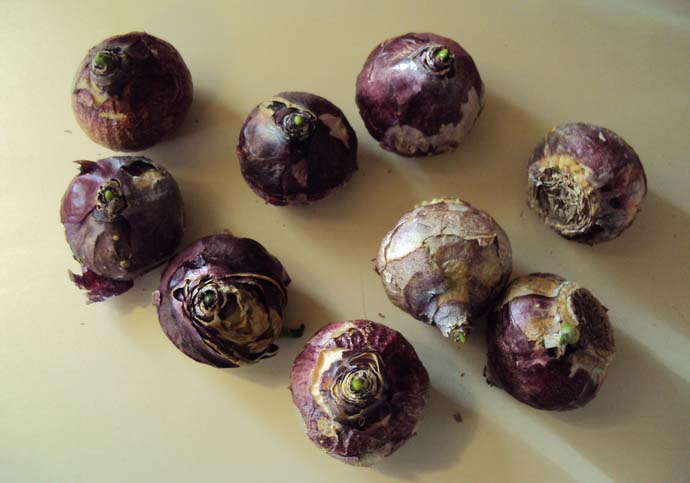
Hyacinth bulbs - Prepare the soil by mixing in equal proportions the following components: leafy soil, turfy soil, sand, humus.
- It is imperative to place a drainage layer at the bottom of the pot and plant the bulb to such a depth that its top remains above the ground.
- Cover everything with prepared substrate, pour over.

Planting Bulbs in a Pot - Place the container in a plastic bag and tie it up, after making several holes in it for air to enter.
- Put the pot in a cool and darkened place until sprouts appear.
There is also a way to grow hyacinth in water, without adding soil, but it is not necessary to dissolve mineral fertilizers and monitor its temperature and the condition of the flower.

Breeding
There are several ways to plant hyacinth. Among them:
- seeds;
- processes;
- cuttings;
- onion separation;
- cutting out the bottom.
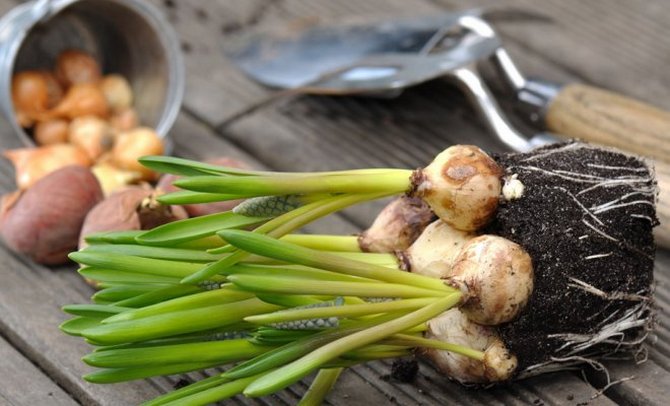
Propagating the plant by children is very simple, you need to separate them from the mother plant and transplant them into another pot, but the procedure should be carried out as carefully as possible so as not to damage the adult flower, otherwise it will die.
The following algorithm is applicable for dormant bulbs to be propagated:
- A sharp sterile object cut off the bottom of the bulb.
- It is placed in the box with the cut up, you need to withstand the temperature +20.
- On the slices of scales, children will appear in a few months.
- After this, the bulb should be planted in a pot with a substrate, also upside down and left in a cool place.
- With the advent of spring, children begin to germinate, then they need to be separated and grown separately.
In this way, you can immediately get more than 10 new flowers, but such hyacinths will bloom only after a few years.
Common Growing Questions
- the size of the bulb in diameter is about 5 cm or more;
- lack of damage and incomprehensible spots;
- elastic and smooth surface;
- the presence of clear scales.
The hue of the bulb will correspond to what colors the future hyacinth will bloom. The best time to buy the bulb is the end of summer.
Despite the fact that many consider this flower to be a garden plant, it can be successfully grown indoors, and it will give bright colors and a pleasant aroma to its owner every spring.

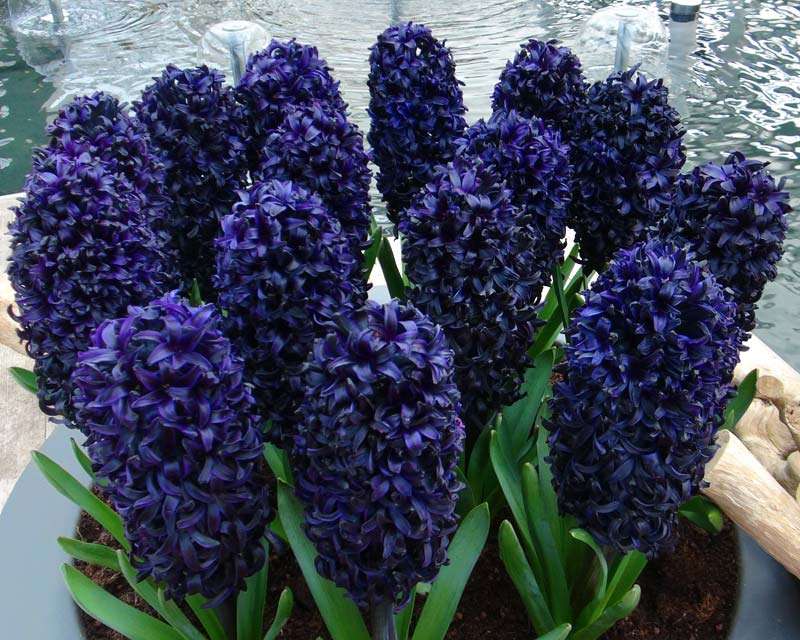
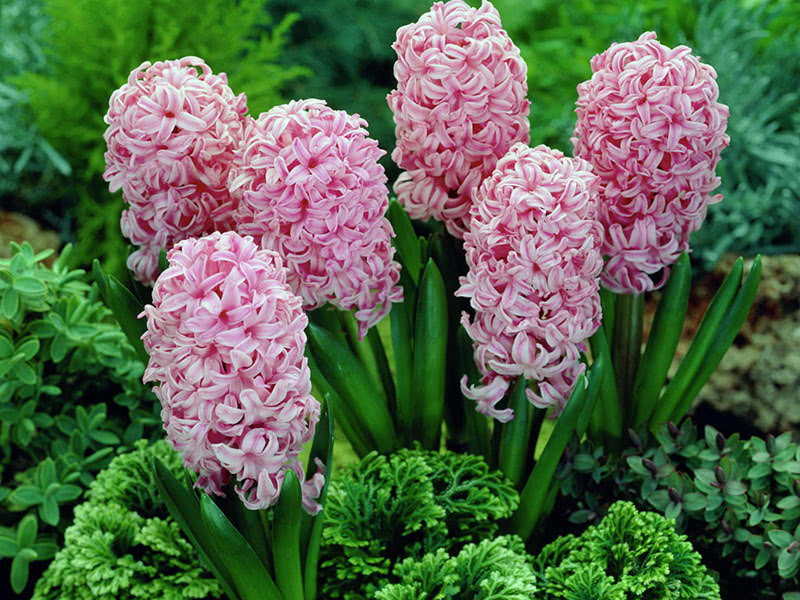
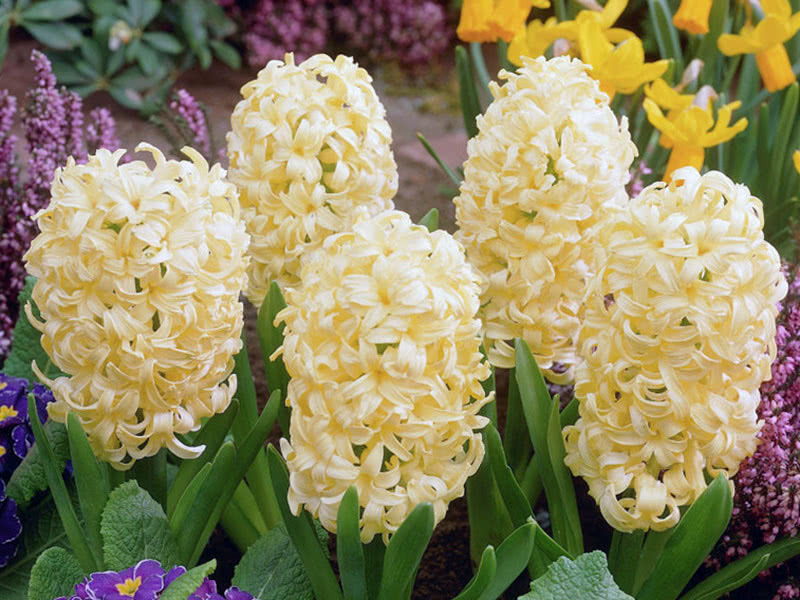
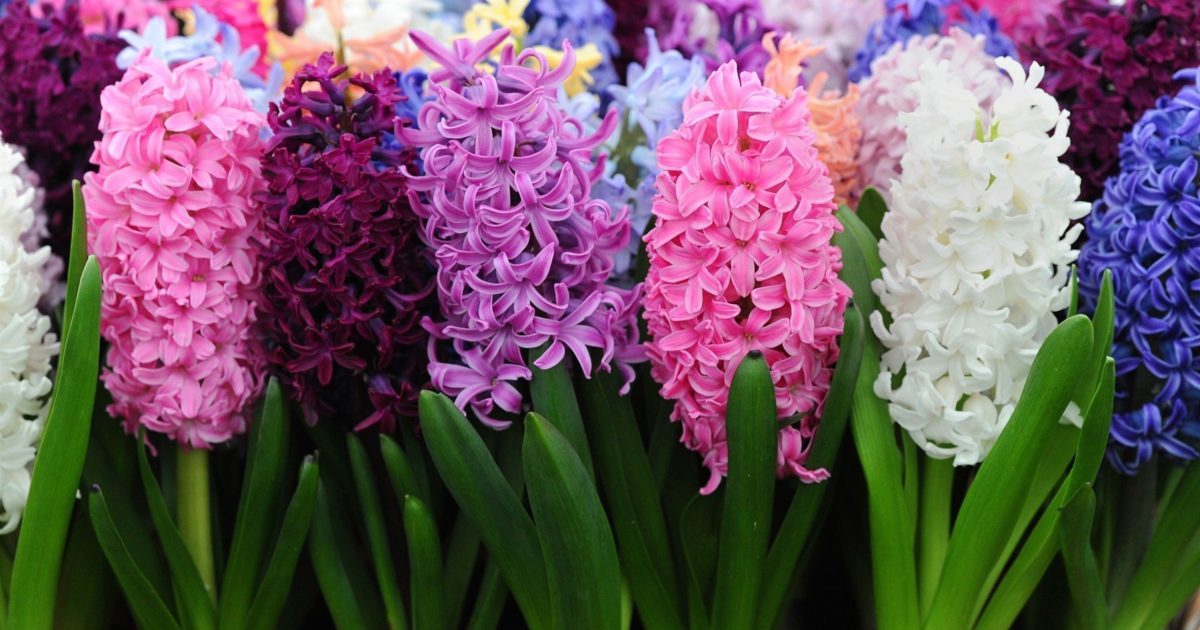
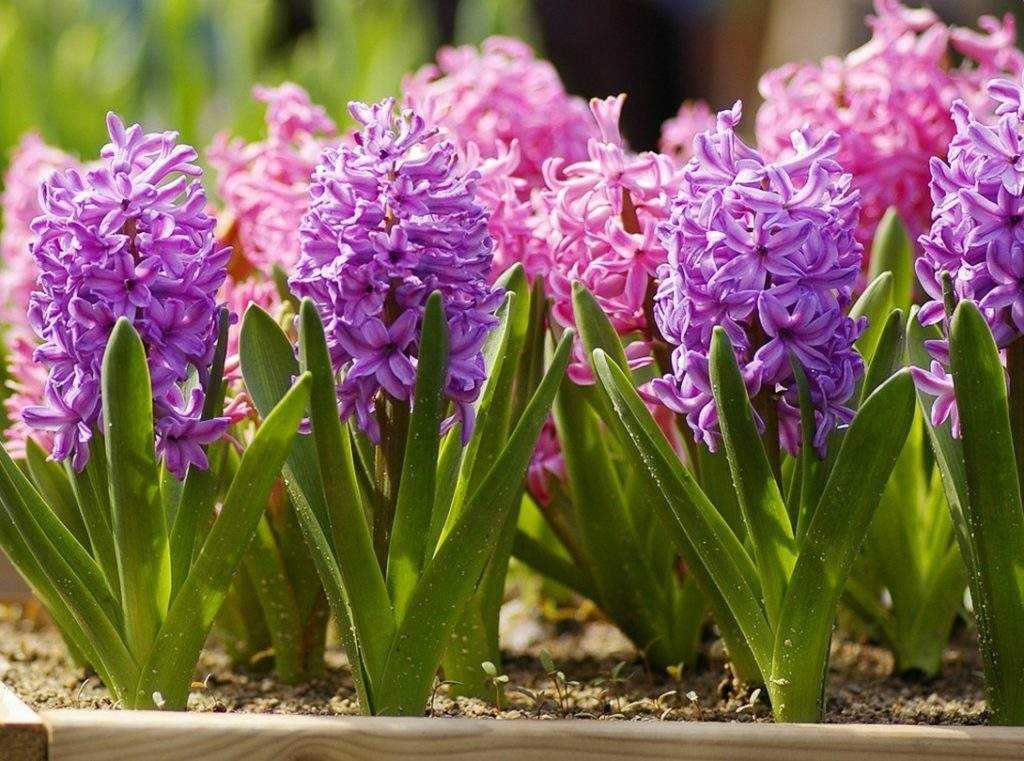
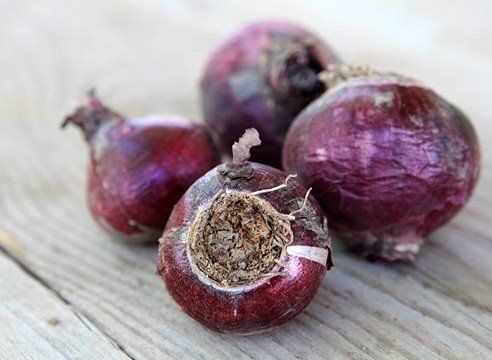
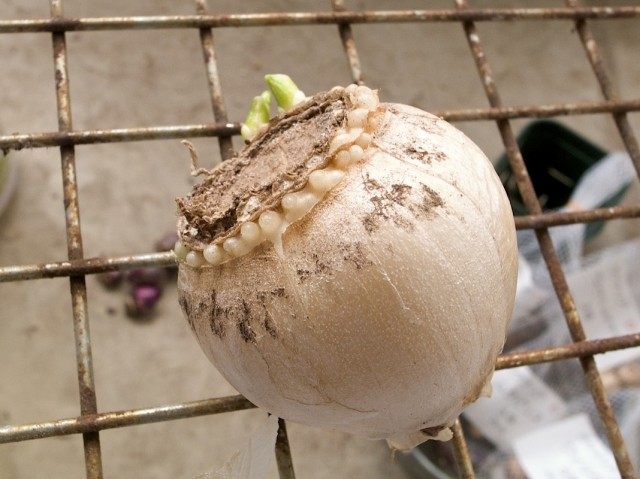
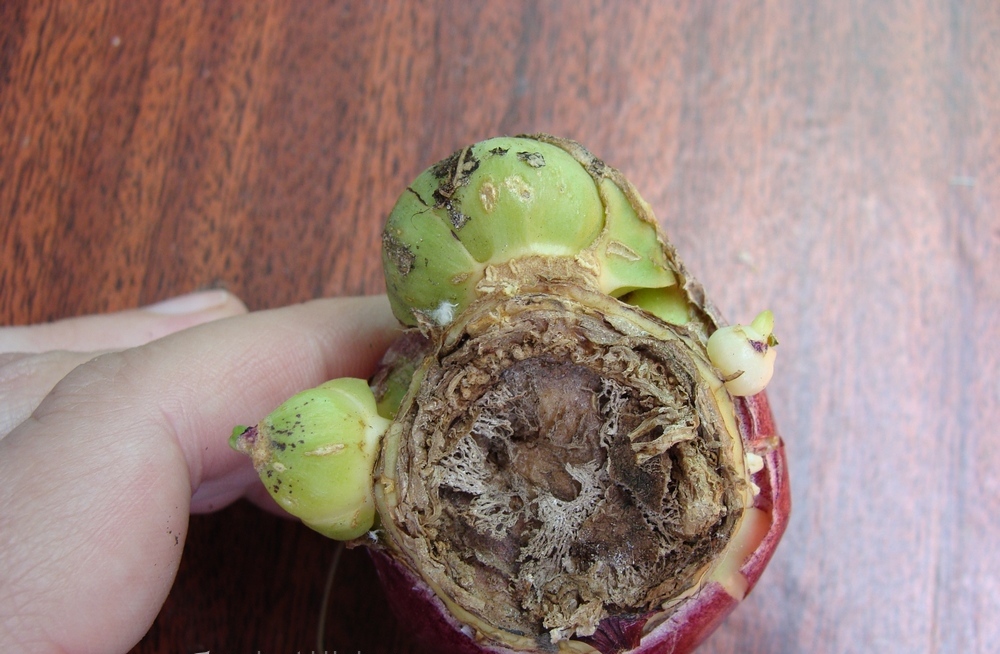
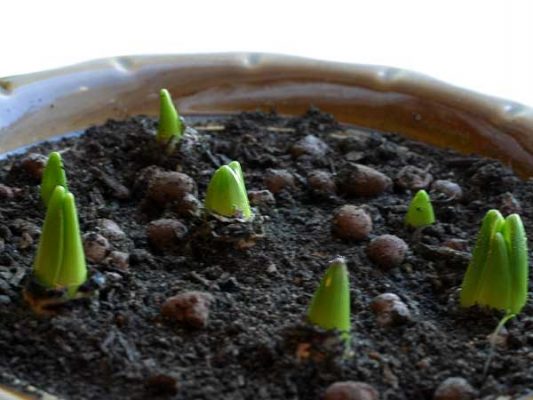
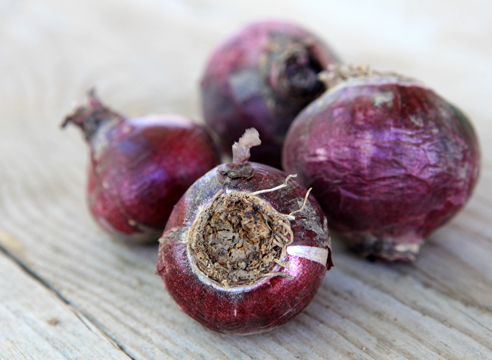 On digging and storing hyacinth bulbs after flowering
On digging and storing hyacinth bulbs after flowering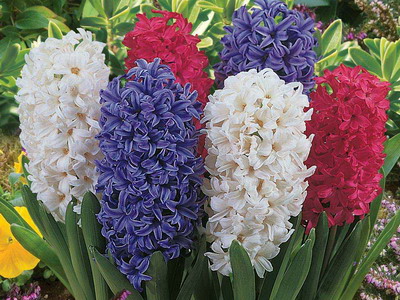 Planting hyacinth in open ground and caring for it
Planting hyacinth in open ground and caring for it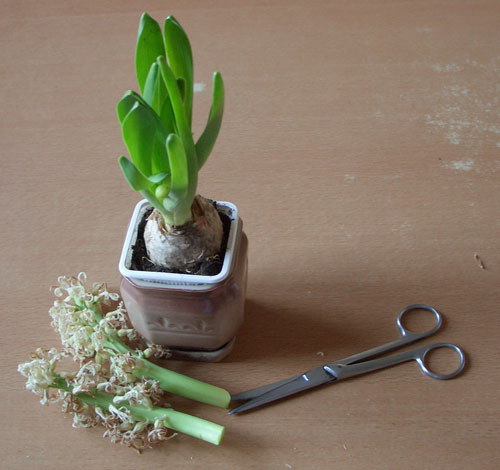 Hyacinth has faded: what to do with the bulb
Hyacinth has faded: what to do with the bulb